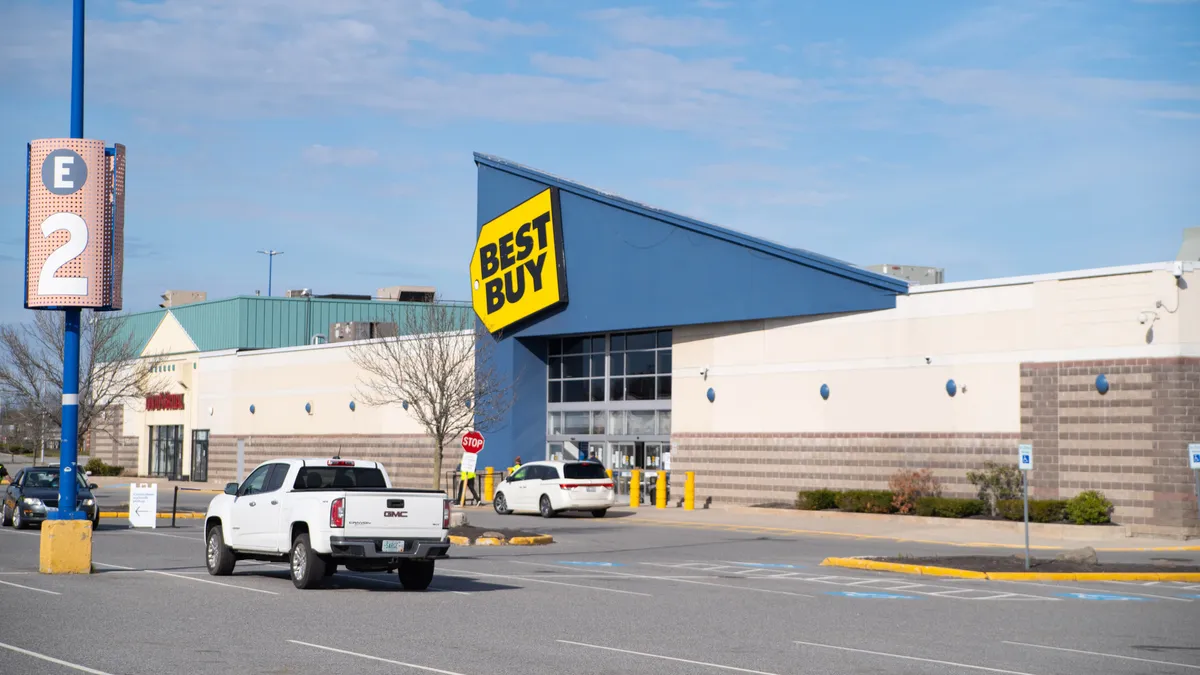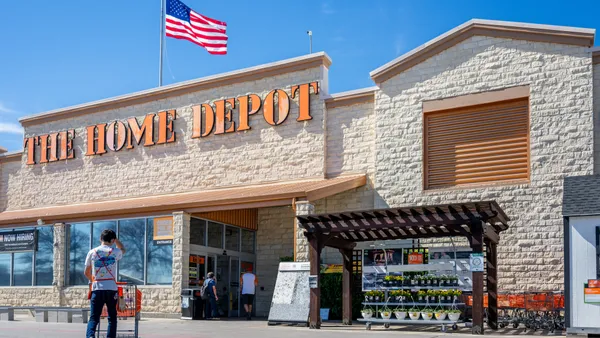Dive Brief:
- As demand for electronics remains low, Best Buy reported revenue fell 7.8% to $9.8 billion in the third quarter, according to a company press release. Comps were down nearly 7%.
- The company’s bottom line also took a hit, albeit smaller, with operating income falling 3% during the quarter and net income down 5%. Based on uncertain consumer demand, which CEO Corie Barry said in a statement has been difficult to predict this year, Best Buy lowered its annual guidance.
- Revenue for the year is now expected to land between $43.1 billion and $43.7 billion, compared to prior guidance of up to $44.5 billion. Comps are now expected to be down between 6% and 7.5%, as opposed to between 4.5% and 6%.
Dive Insight:
Best Buy continues to struggle with uneven consumer demand, though Barry said on a call with analysts that the company expects more stabilization in the electronics sector next year. Electronics sales in October broke a streak of year-over-year declines, nudging up 1.4%, according to data from the U.S. Commerce Department.
With consumers holding back on big-ticket purchases, or choosing to use their funds elsewhere, Best Buy risks losing out not just on sales but also foot traffic that often drives additional purchases, according to GlobalData Managing Director Neil Saunders.
“Given this trend, one of the challenges for Best Buy is to improve the performance of stores. Part of this comes down to giving consumers more reasons to visit, which includes better experiences and more newness and innovation in the offer. In our view, this can be accomplished by being more imaginative and using suppliers to help Best Buy showcase interesting technology,” Saunders said in emailed comments. “To be fair, Best Buy is working with vendors on things like branded end-caps and fixtures, but it needs to be a lot more radical in its thinking.”
Barry on Tuesday spoke extensively on the company’s efforts to refresh stores with improved merchandising and said Best Buy expects to continue revamping locations next year. Instead of pursuing large-scale remodels, the company plans to spend more capital toward improving a larger number of stores. Among the efforts, Best Buy is rightsizing certain categories to make space for new ones in stores, for example trimming back on gaming to make room for wellness products, e-bikes and a partnership with Lovesac.
Barry also touted agreements with Lego and Therabody to open shop-in-shops in all of Best Buy’s experience stores. Over the past year and a half or so, the company has deepened its presence in electric transportation and beauty products, partnered with wearable health technology company Ōura and begun selling continuous glucose monitoring systems. The retailer is working to raise awareness of all of these categories, including through an effort called “Yes, Best Buy sells that.”
Best Buy also touted gains in its membership program. The revamped tiered program, which was rolled out in June, brought in 35% more new paid members compared to last year, and Best Buy now has 6.6 million members. Paid members shop more frequently and interact with the brand more, Barry said.
Even with these positive signals, Saunders said sales are now slightly down versus 2019.
“This is significant as it shows Best Buy has now lost all the gains it made during the pandemic,” Saunders said. “Given the rise in costs and overheads for the company this inevitably drags down productivity and means that the business has, in effect, moved backward.”














